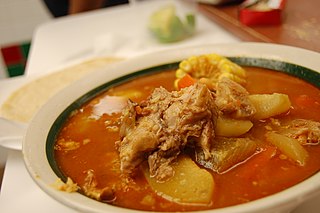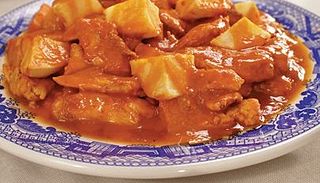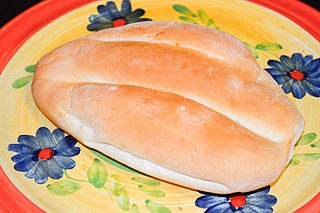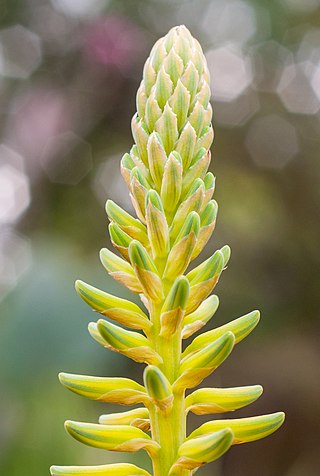
Ceviche, cebiche, sebiche, or seviche is a dish consisting of fish or shellfish marinated in citrus and seasonings. Different versions of ceviche are part of the culinary culture of various Spanish-American countries along the Pacific Ocean where each one is native: Chile, Colombia, Costa Rica, Ecuador, El Salvador, Guatemala, Honduras, Mexico, Nicaragua, Panama and Peru. In Peru it is considered a flagship dish and cultural heritage.

Sinaloa, officially the Estado Libre y Soberano de Sinaloa, is one of the 31 states which, along with Mexico City, comprise the Federal Entities of Mexico. It is divided into 18 municipalities and its capital city is Culiacán Rosales.

Creole cuisine is a cuisine style born in colonial times, from the fusion between European, African and pre-Columbian American traditions. Creole is a term that refers to those of European origin who were born in the New World and have adapted to it.

The Mexican Pacific League, known as Liga ARCO Mexicana del Pacífico for sponsorship reasons or simply LMP for its acronym in Spanish, is a ten team professional baseball winter league based in Northwestern Mexico founded in 1945. The league's champion takes part in the Caribbean Series each year.

Ginataan, alternatively spelled guinataan, is a Filipino term which refers to food cooked with gatâ. Literally translated, ginataan means "done with coconut milk". Due to the general nature of the term, it can refer to a number of different dishes, each called ginataan, but distinct from one another.
Nicuatole is a pre-Columbian gelatinous dessert made from ground maize and sugar, traditional in Oaxaca, Mexico. It may be flavored with coconut, pineapple, milk, mango and other seasonal fruits.

The cuisine of Veracruz is the regional cooking centered on the Mexican state that stretches over most of the country's coast on the Gulf of Mexico. Its cooking is characterized by three main influences, indigenous, Spanish and Afro-Cuban, due to its history, which included the arrival of the Spanish and that of slaves from Africa and the Caribbean. These influences have contributed many ingredients to the cooking including native vanilla, corn and seafood, along with rice, spices and tubers. How much the three mix depending on the area of the state, with some areas more heavily favoring one or another. The state has worked to promote its cuisine both in Mexico and abroad as part of its tourism industry.

The cuisine of Chiapas is a style of cooking centered on the Mexican state of the same name. Like the cuisine of rest of the country, it is based on corn with a mix of indigenous and European influences. It distinguishes itself by retaining most of its indigenous heritage, including the use of the chipilín herb in tamales and soups, used nowhere else in Mexico. However, while it does use some chili peppers, including the very hot simojovel, it does not use it as much as other Mexican regional cuisines, preferring slightly sweet seasoning to its main dishes. Large regions of the state are suitable for grazing and the cuisine reflects this with meat, especially beef and the production of cheese. The most important dish is the tamal, with many varieties created through the state as well as dishes such as chanfaina, similar to menudo and sopa de pan. Although it has been promoted by the state of Chiapas for tourism purposes as well as some chefs, it is not as well known as other Mexican cuisine, such as that of neighboring Oaxaca.

Salsa verde is a type of spicy, green sauce in Mexican cuisine based on tomatillo and green chili peppers.

Salsa roja is a type of spicy red sauce in Mexican cuisine. It is made of jitomate, ground with onion, garlic, chilli, salt and pepper to taste.

Mole de olla is a Mexican traditional soup. It is made of xoconostle, squash, zucchini, green beans, corn, potato, chambarete and aguja meat, submerged into a broth of chile guajillo and chile pasilla, seasoned with garlic, onion, and epazote. It is served with pieces of chopped serrano pepper and limes. The term mole means a mix of ingredients or sauce.

Arroz a la tumbada is a traditional Mexican dish prepared with white rice and seafood. In this specialty a sofrito is made with chopped tomato, onion, garlic and red pepper. Rice and fish broth or water is added, then seafood which may include shrimp, clams, crab, calamari and whitefish. The dish may be seasoned with fresh leaves of epazote, parsley, coriander and oregano. Arroz a la tumbada is traditionally cooked in a cazuela, which is a thick clay pot.

Puntas are a traditional dish of Mexican cuisine. It consists of small cuts of meat cooked in various Mexican sauces, either of dried chili or fresh chilis sauces. Initially, the tips were made with strips of leftover beef cut, known as puntas de filete. Then, different types of meat have been used.

The pambazo or pan bazo is a white bread of wheat flour, yeast, water and salt, used in the Mexican sandwich called pambazo, which takes the name of the bread. It is about sixteen centimeters long, concave and oval. In its outer layer, it is golden and crispy, and in its inner part, it is white and very light. Not to be confused with telera, since it has a different consistency. There is also a Spanish pan bazo bread and a pambazo from Veracruz, Mexico.

Telera is a white bread made from wheat flour, yeast, water and salt, used in various Mexican sandwiches. It is about sixteen centimeters long, flattened and oval shaped with two longitudinal deep marks at the top from side to side. In its outer layer, it is golden and commonly soft, and in its inner part, it is white and dense crumb. Mexican tortas are prepared with this bread.

Tacos de canasta are a popular Mexican food preparation consisting of tortilla filled with various stews. Typical fillings are papa ('potato'), chicharrón ('rinds'), frijoles ('beans') or adobo ('marinade'). In all cases, the tacos are bathed in oil or melted butter. They are originally from San Vicente Xiloxochitla, Tlaxcala, although they are consumed throughout central Mexico, especially in the large cities of the country. It is usually sold on bicycles that circulate on the streets or also in street stalls. The name comes from the basket in which they are kept to keep them warm.

Xnipec is a spicy sauce native to the Yucatán peninsula, made with habanero pepper, purple onion, bitter orange juice and salt. Sometimes oregano, vinegar, bay leaf, coriander or pepper are also used. If sweet orange is used, lemon juice can be added to acidify it; if sour orange is used, it is not necessary.

The maguey flower, in Spanish, flor de maguey, also known locally as gualumbo, hualumbo, quiote or jiote is a typical product of Mexican cuisine, cultivated mainly in the rural areas of the center of the country. Due to its difficult availability, it is considered a delicacy. Maguey flowers are harvested and consumed closed, since once opened (ripened), they have a bitter taste.

Irma Cristina Miranda Valenzuela is a Mexican model, TV host and beauty pageant titleholder who was crowned Mexicana Universal 2022 at the pageant on May 21, 2022. As Mexicana Universal, Miranda represented Mexico at the Miss Universe 2022 competition.






























